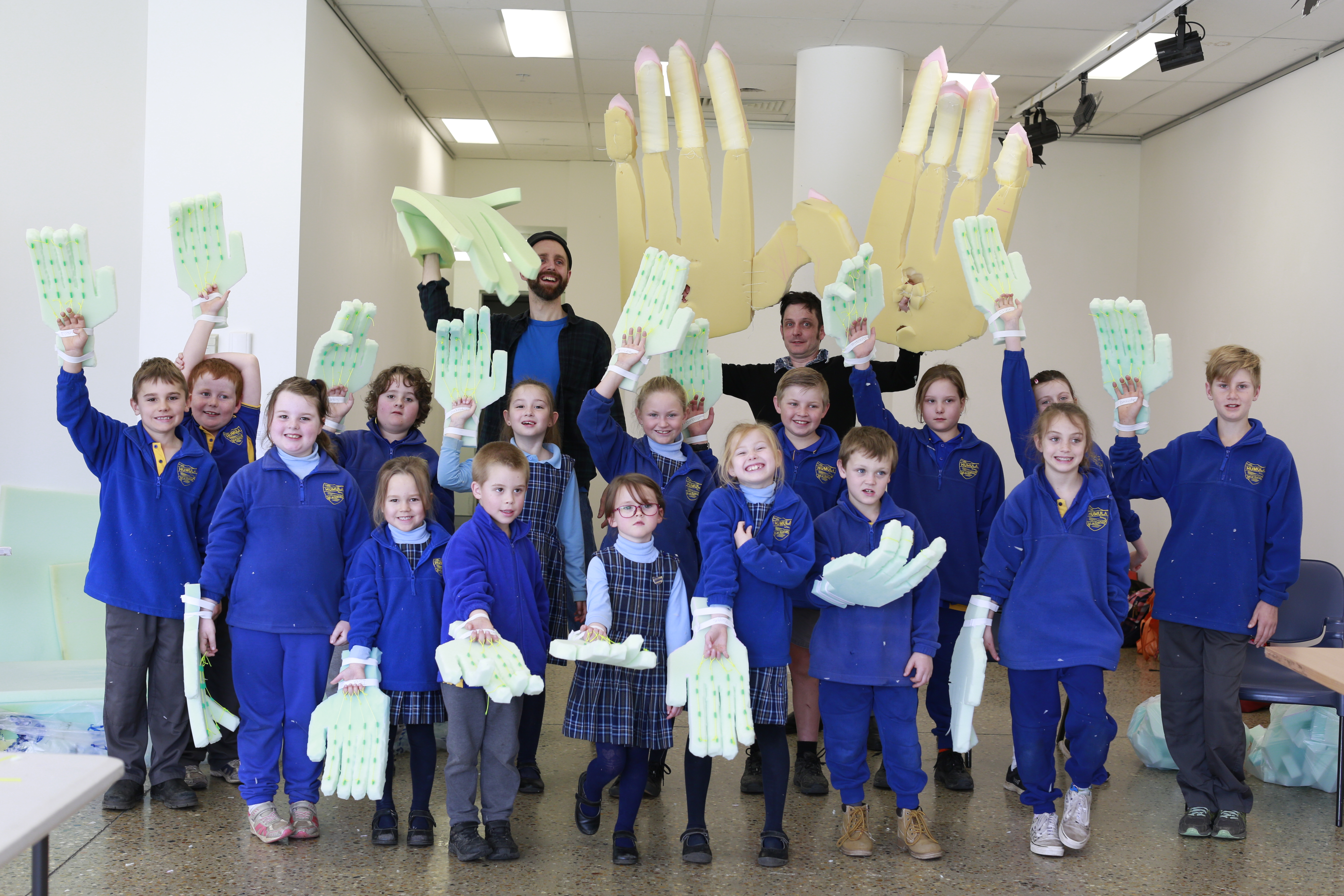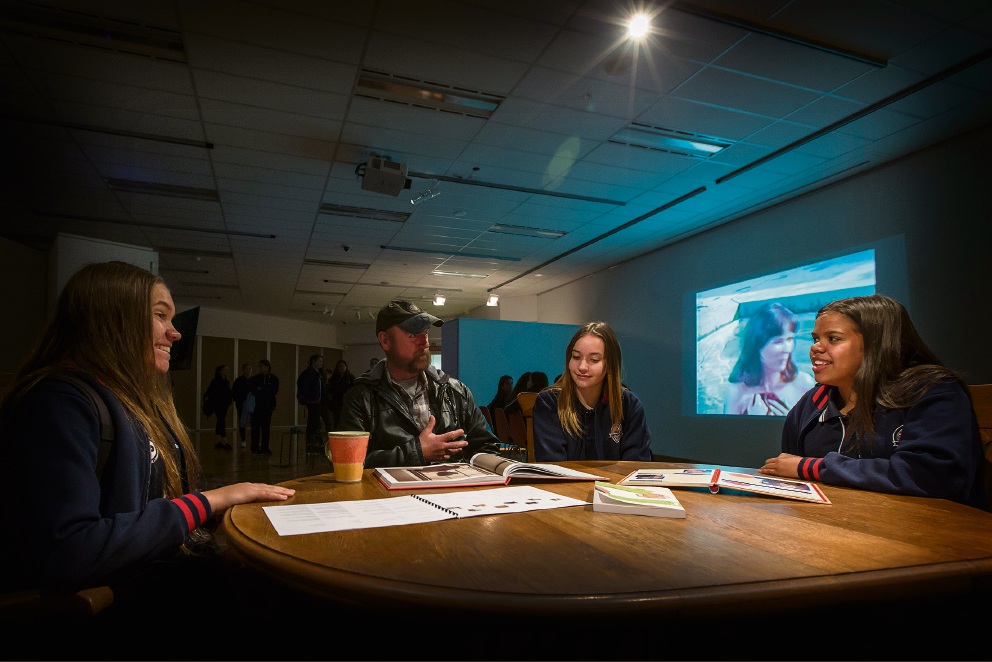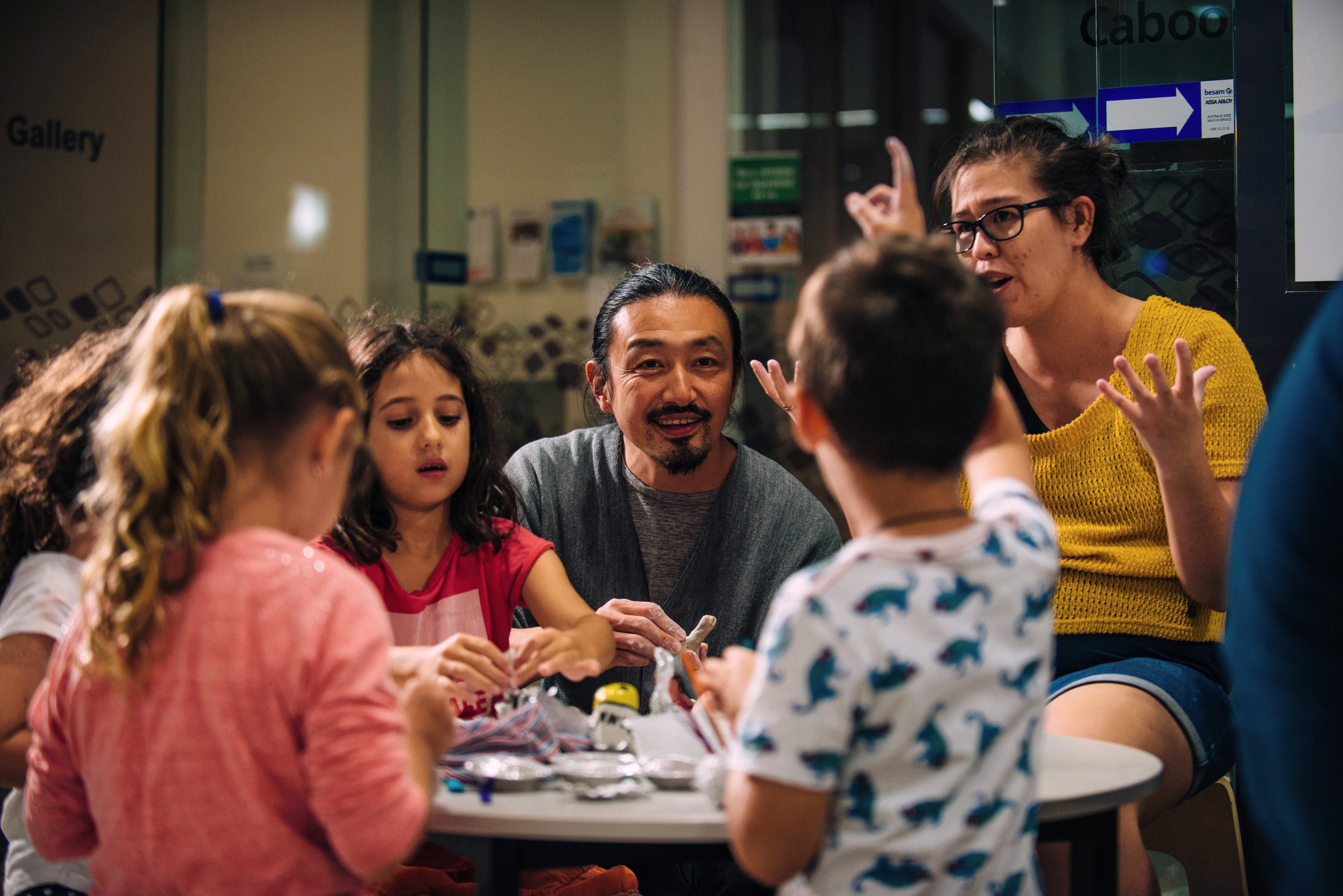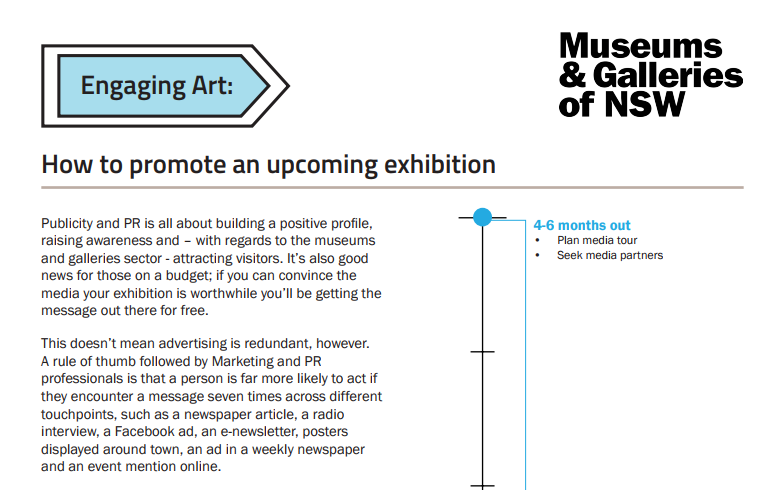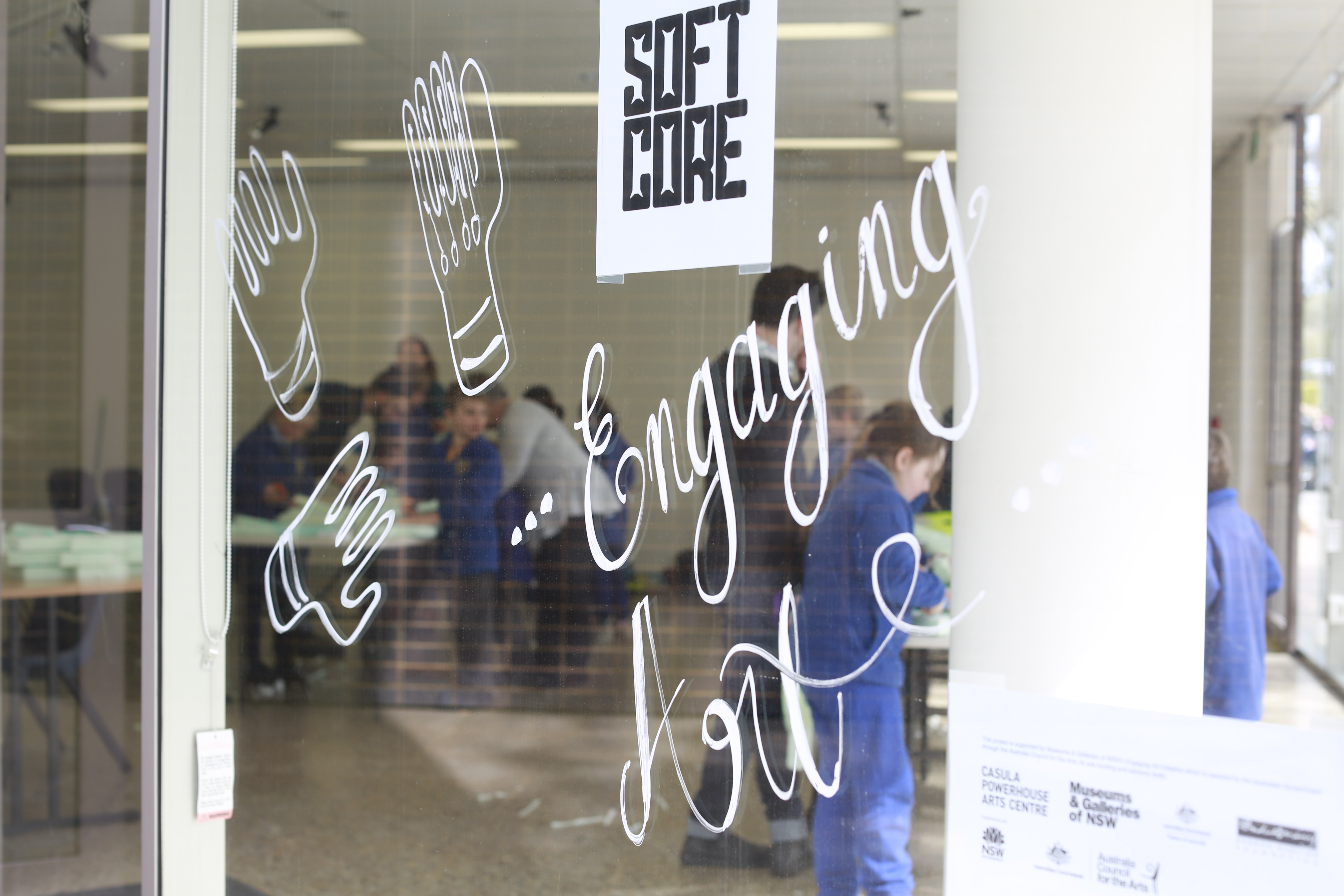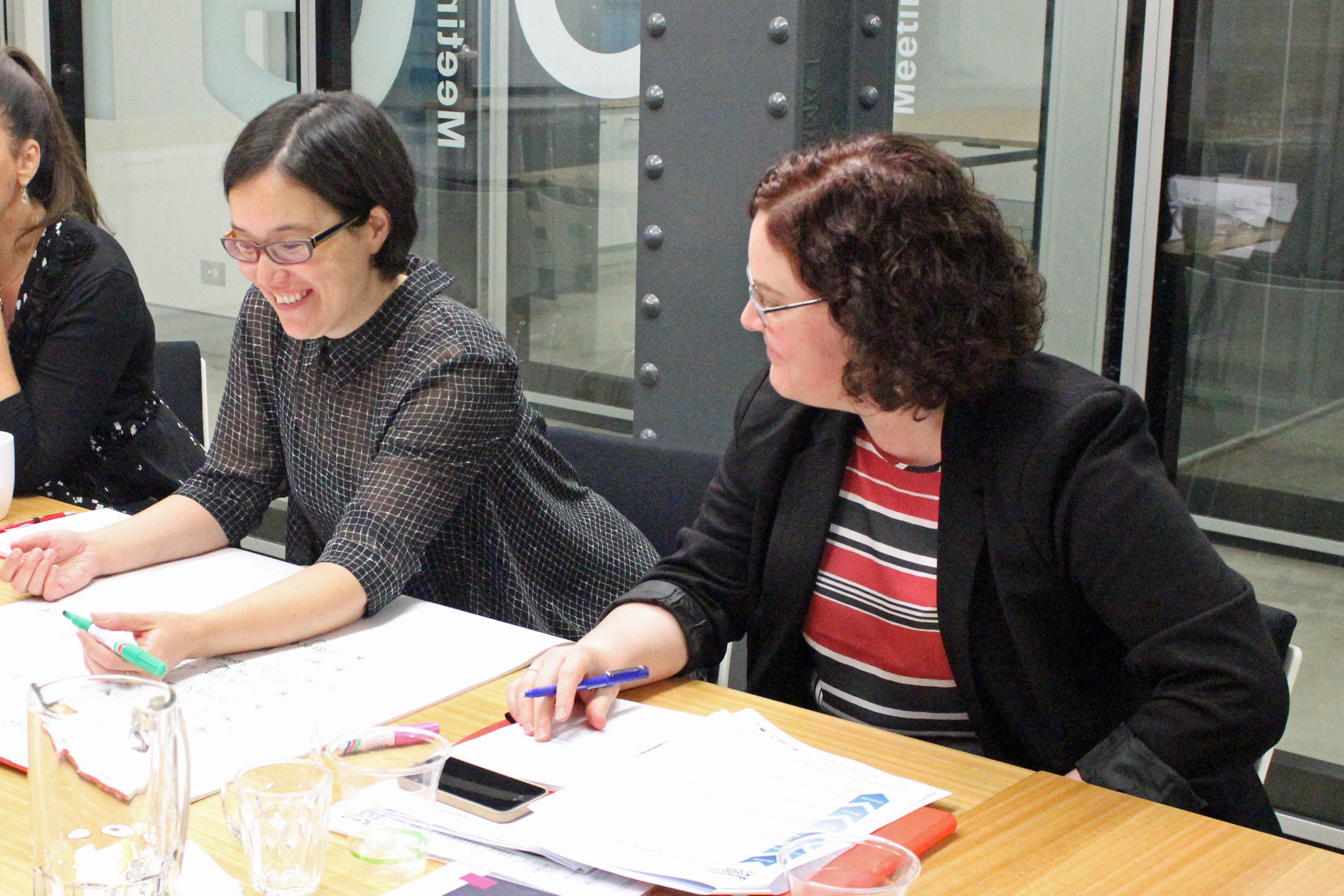Engaging Art Initiative
Supported by the Australia Council for the Arts the Engaging Art initiative launched in early 2017 wrapping up in November 2019. This pilot initiative focused on developing and engaging new audiences for touring exhibitions of contemporary visual art at regional galleries across Australia.
Through our own research and via direct feedback from regional galleries, M&G NSW identified a need to work closely with venues to deliver their priorities in engagement – untapped audiences, First Australians, Culturally and Linguistically Diverse Australians and young people – these are essential targets for the strategic vision of galleries across the country, yet they often lack resources and experience to attract and maintain engagement with these groups.
M&G NSW understands the positive impact small to medium sized galleries have on local communities. They inspire their communities and visitors through art, stories and ideas – creating jobs, educational and volunteering opportunities for many ages as well as community excitement and pride. One way we support them in doing this is through our touring exhibition program which provides the very best contemporary art to the regions affordably. We also recognise that supporting these galleries to engage with audiences through these exhibitions is vital. The Engaging Art Initiative worked directly with galleries and their unique communities to grow visitation, participation and engagement, as well as visual arts awareness and opportunities for artists.
TARGETED AUDIENCE ENGAGEMENT SUPPORT
The core strategy of this pilot initiative was to develop public program activities and marketing strategies aligned with two of our touring exhibitions, Soft Core, which presents artistic practices that explore the many facets of ‘softness’ from large-scale inflatables to forms made from soft materials to materials that simply look soft and Montages: The Full Cut 1999–2015 presenting the full suite of eight montage films by artist Tracey Moffatt and collaborator Gary Hillberg.
Our feedback from the visiting artists was also very positive. They all reported that the visit had increased their understanding of regional audiences and in some instances, they presented to a demographic for the first time (e.g. Koji Rui presenting to families and young children).
– Caboolture Regional Art Gallery, QLD
Four venue galleries took part in the initiative and developed audience engagement strategies relevant to and in collaboration with their communities, they were, Wanneroo Library and Cultural Centre, WA; Bathurst Regional Art Gallery, NSW; Wagga Wagga Art Gallery, NSW and Caboolture Regional Art Gallery, QLD. M&G NSW provided targeted financial support to these venues, along with access to audience development, PR and marketing experts and the curators and artists associated with each exhibition.
Each venue developed their own unique pilot program tailored to audience development goals and priorities specific to their region and in doing so discovered new audiences, partnerships and models which can be rolled out in their future programming.
A wider audience visited the gallery, [the Engaging Art Initiative] achieved our goals, participants reported a deeper understanding of art and differing art forms, developed skills and knowledge, and had a sense of confidence, pride, self-efficacy and esteem…for those participants who hadn’t visited a gallery before, they felt more comfortable in the space and I feel confident they will visit again.
– Wanneroo Library and Cultural Centre, WA
PR & MEDIA SUPPORT
The initiative also provided a boosted publicity and media campaign – working with Humankind PR and regional galleries, new marketing strategies and targeted media campaigns were undertaken alongside the development of media releases and contact lists. This resulted in valuable media exposure and PR professional development opportunities for regional venues as well as an overall promotion of the exhibitions and stimulation of audience numbers.
The resources and opportunity M&G NSW’s Engaging Art Initiative has impacted on the depth of engagement in terms of exhibition audience numbers [and their] connection to BRAG and its staff.
– Bathurst Regional Art Gallery, NSW
ENGAGING ART INTO THE FUTURE
Through detailed reporting, feedback and research much has been learnt during this pilot initiative informing new Engaging Art programs such as Cultural Mediation in Practice and Engaging Art Resources, which will continue and build upon this work and further develop capacity and skills, whilst delivering new programs and activities.
You can read more about our continuing Engaging Art programming here
Follow Engaging Art on social media with #MGNSWEngagingArt
ENGAGING ART RESOURCES
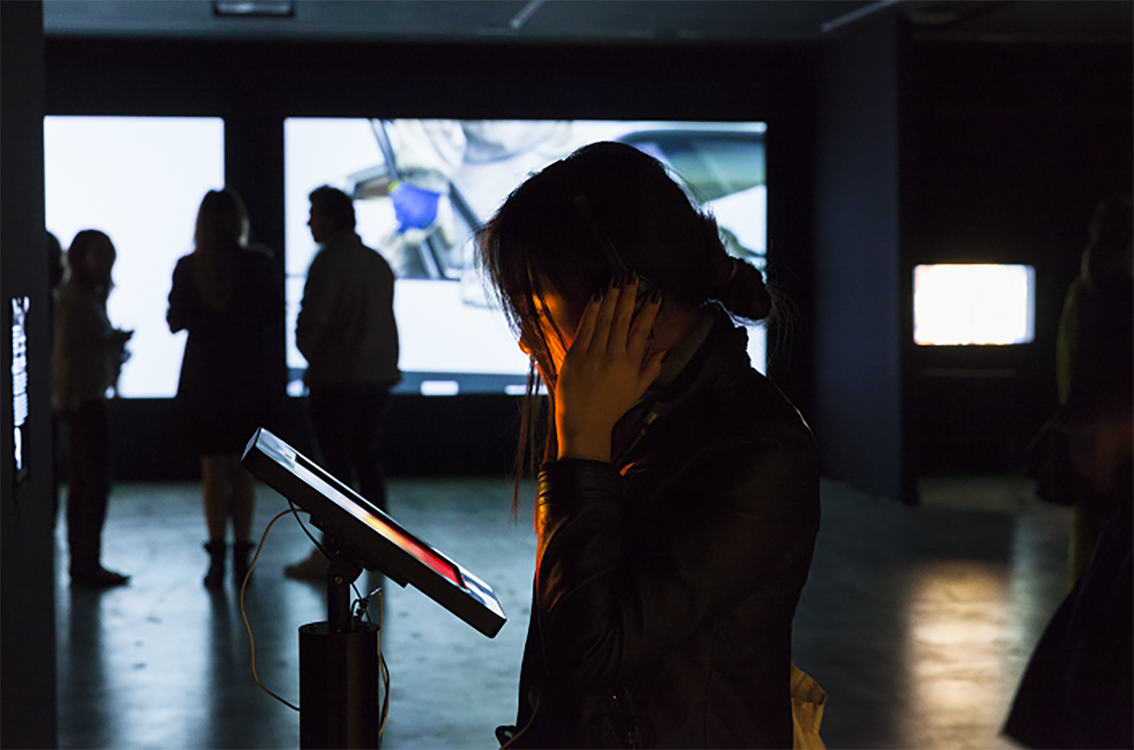
People Like Us installation view, UNSW Galleries, 2015. Image courtesy UNSW Galleries. Photography by silversalt.
Design Approaches to Digital Projects – A Beginners Guide
This is a guide to help you develop a digital or transmedia project for your museum or gallery.
Digital Engagement: Connecting With Your Audience
A guide to Implementing a Digital Project
This guide is intended for anyone planning to use digital technologies to enhance the galley or museum experience and needing to engage external resources/contractors to do so.
A digital project is about audience and community engagement through the creation of interactive story-telling, immersive environments and broader transmedia experiences.
Whether it is getting them through the door – or deepening your engagement – social media is as important as your website or brochure in communicating to your audience and for them to communicate with you.
In a recent national survey it was revealed that “8 in 10 people engage with the arts online, increasing from 7 in 10 in 2013, and 5 in 10 in 2009”. (Connecting Australians: The National Arts Participation Survey, Australia Council for the Arts, 27 June 2017)
Facebook, Instagram and Twitter are the most commonly used social media sites for museums and galleries each with its own slightly different focus and audiences.
This resource explains the differences between different social media platforms and offers practical tips on creating content, engaging with your audience and helpful do’s and don’ts to get you started.
_Soft Core_ at Shepparton Art Museum: (foreground) Patricia Piccinini, _Foundling_, 2008; (background) Patricia Piccinini, _A Deeply Held Breath_, 2009; (right hand side) Michael Parekowhai, _Cosmo McMurtry_, 2006. Photo by Serana Hunt.
How to Engage with Young People
Museums and galleries often find it challenging to reach and engage with young adult and teenage audiences. How can you attract young people to your organisation, and more importantly how can you motivate and retain a young audience?
This guide is designed to help you engage young people in your museum or gallery. The following pointers are applicable to all programs regardless of scale, from one-off artist workshops and school visits to longer engagements such as youth committees, teen nights or art shows.
We recognise you may not be able to implement all of the following ideas into your programming, but even implementing just one will start to make a difference to the way young people engage with your organisation.
How to Develop a Public Program
Designing public programs which are meaningful cultural experiences for new and existing audiences.
Public programs are a core way that galleries and museums engage with audiences and attract new visitors. When done well, public programs can make the museum or gallery feel like a welcoming place for everyone, reaching community members who might not otherwise attend. Such programs can make a genuine impact on community members, making people feel, think or behave in new ways. They can also demonstrate to funders and decision-makers the vital contribution that galleries and museums make to a region’s cultural vibrancy and social cohesion.
This guide is designed to help you devise public programs in a way which:
- Are driven by data about your existing and potential audiences
- Furthers the vision of the organisation
- Makes a genuine difference to visitors’ lives
This guide is based on a process which Museums & Galleries of NSW (M&G NSW) and BYP Group designed and trialed with four galleries in 2017 as part of the development of their public programs for touring exhibitions Soft Core and Tracey Moffatt & Gary Hillberg’s Montages: The Full Cut 1999–2015. These public programs were delivered as part of the Engaging Art initiative. The four galleries were overwhelmingly positive about the process, leading M&G NSW to develop this resource to share the steps with the wider sector.
How to Conduct Audience Research
Finding out what you really need to know about your audience.
Audience research is about finding out who your existing visitors and program participants are and why they come. You do audience research to understand whether your current offerings are working for your current audiences. Market research is about understanding your existing and potential visitors, in order to attract and retain new audiences.
This resource will guide you through the following key steps in conducting useful audience research:
- Plan
- Design
- Test
- Collect
- Reflect
- Act
How to Promote an Upcoming Exhibition
Publicity and PR is all about building a positive profile, raising awareness and – with regards to the museums and galleries sector – attracting visitors. It’s also good news for those on a budget; if you can convince the media your exhibition is worthwhile you’ll be getting the message out there for free.
This doesn’t mean advertising is redundant, however. A rule of thumb followed by Marketing and PR professionals is that a person is far more likely to act if they encounter a message seven times across different touchpoints, such as a newspaper article, a radio interview, a Facebook ad, an e-newsletter, posters displayed around town, an ad in a weekly newspaper and an event mention online.
We know it’s difficult to find time for proactive tasks, but a little goes a long way. Try some of the ideas in this resource in the lead up to opening day. If it suits your working style, add these pointers to your online calendar. It doesn’t matter at what point you’re reading this, there should be something you can take away and act on immediately.
This project has been assisted by the Australian Government through the Australia Council for the Arts, its arts funding and advisory body.


